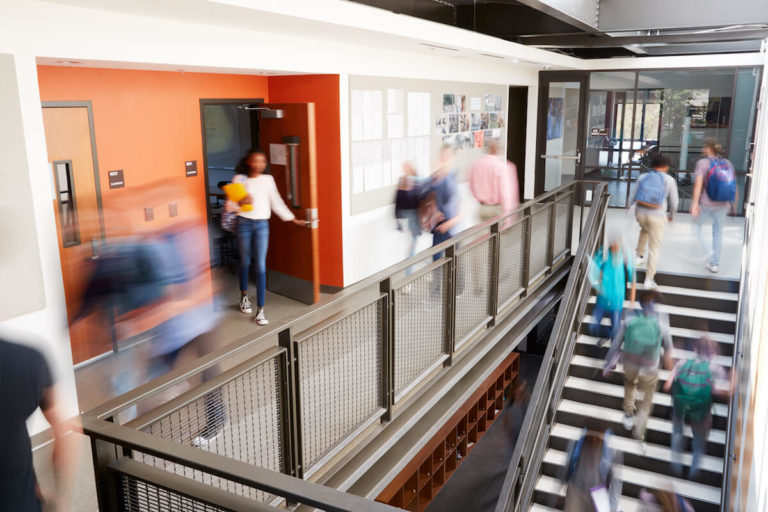A healthy school and environment is not merely a desirable outcome; it is the fundamental bedrock upon which effective education and holistic student development are built.
While instruction remains the core activity in any classroom teacher’s domain, the underlying framework that supports it is robust classroom management. This comprehensive approach sets the stage for a thriving learning environment, impacting everything from student engagement to staff well-being.
This article explores the critical components of fostering a positive school environment, addressing common challenges, and outlining actionable strategies for creating a truly healthy environment for all.
The Foundation of a Healthy School Environment: Classroom Management
Effective classroom management is the cornerstone of a positive school environment. Many educators define it as a multifaceted approach encompassing:
- Establishing Clear Classroom Procedures: Setting clear expectations for daily routines and activities.
- Managing Student Behavior: Implementing strategies to encourage positive conduct and address misbehaviors constructively.
- Developing Positive Relationships: Fostering strong connections between students, and between students and teachers.
- Implementing a Culture/Environment for Student Learning: Cultivating an atmosphere conducive to academic and personal growth.
The principles of classroom management are universally vital, extending beyond traditional classrooms to virtual settings, physical activity spaces (gyms), music rooms, computer labs, and vocational training environments (Erdogan et al., 2010).
When individual classrooms cultivate positive cultures, this positive influence proliferates throughout the entire school building, contributing to a more supportive and healthy school and environment overall. Despite inherent challenges, prioritizing a positive school environment profoundly benefits both staff and students, with numerous avenues available for continuous improvement.
Navigating Challenges in the School Environment
All schools, irrespective of their existing culture, encounter challenges related to their school environment. The key differentiator lies in how schools choose to confront these obstacles. Erdogan et al. (2010) highlight that student misbehaviors are often attributed to “family related issues and student related issues” (p.883).
These factors can be categorized as internal (those a classroom teacher can influence) and external (such as home life or family issues, which are beyond a teacher’s direct control). Historically, it has been easy for educators to attribute classroom issues and student misbehavior solely to external factors.
Another significant challenge facing school environments is the presence of ineffective teachers. Research by Bland, Church, Clayburn, Neill, and Shimeall (2011) on reasons for non-renewal of teacher contracts revealed that educational leadership often prioritizes classroom management skills.
These include “creating an environment of respect and rapport, managing student behavior, managing classroom procedures, and establishing a culture for learning.” These challenges underscore the fundamental need for positive relationships within the school community.
While seemingly simple, fostering strong relationships is a profound truth. School administrators, as key figures in educational leadership, face the challenge of tackling these issues head-on, understanding that their actions ripple throughout the entire institution (Whitaker, 2002).
The Profound Impact of a Positive School Environment on Students and Staff
School climate plays a pivotal role in setting the overall tone within a school. While each school’s climate is unique, common characteristics distinguish positive from negative environments. School climate is broadly defined as the holistic healthy environment of a school building (Owens, 2015).
Educational leadership, particularly school administrators, significantly shapes this climate through their leadership style, demonstrated care, clear vision, support for teachers and students, and commitment to equipping effective teachers.
The presence of effective teachers is paramount, and it is the administrator’s responsibility to cultivate this by setting a positive school climate. Rather than simply dismissing challenging teachers, administrators must actively implement change.
Just as negative teachers and staff can inject negative vibes into a school’s atmosphere and influence others, positive teachers and staff create an infectious impact.
Positive staff members foster a desire for students and other staff to engage with the school. The greater the positivity that permeates the school building, the more tangible the turnaround, from improved attendance to increased teacher buy-in, contributing to a truly healthy work environment.
Strategies for Cultivating a Superior School Environment
While school environments can decline due to negativity, they can swiftly experience a positive turnaround through deliberate, positive initiatives. Schools improve through a combination of key facets, including consistency, a clear vision and mission, dedicated relationship-building, and fostering strong school pride.
Consistency
Consistency is intrinsically linked with clear expectations and procedures. When a classroom teacher maintains consistency in their expectations and procedures, students gain predictability and comfort in their learning environment.
Students, much like adults, thrive in an environment that is consistent, organized, and orderly. This principle extends to teachers and staff members as well.
The more consistency demonstrated by school administrators—from implementing policies to maintaining a stable presence year-to-year—the more likely teachers and staff are to follow suit, understanding what to expect within their healthy work environment.
Clear Mission and Vision
Without a compelling vision and purpose, it becomes easy for individual desires to overshadow what is truly best for the collective.
The educational leadership’s vision should center on students learning in a way that positively impacts them daily, subsequently creating a positive ripple effect on the world around them.
The mission is to ensure that all students can grow intellectually, socially, and emotionally within a nurturing, positive school environment that prioritizes providing students with the best opportunities for self-improvement each day.
Relationship-Building
While sometimes viewed as a mere initiative, relationship-building is the very essence of enhancing a school environment. Teacher-to-student relationships are not solely built on academic content; they are forged through shared interests like skateboarding, attending extracurricular events, discussing music, setting clear expectations, and meeting students where they are in each moment.
A strong belief is that even if a student faced suspension yesterday, they should still be greeted with a “hey, how are you” and a fist bump today. The same principle applies to staff members.
Teachers are invaluable resources in education, and their ability to learn from one another, fostered through relationship-building, is crucial for a positive classroom teacher and school environment. For teachers to learn from each other, they must first learn from educational leadership.
School administrators must nurture these valuable resources through support, consistency, genuine connection, ensuring safety, and serving as positive leaders, thereby creating a healthy work environment.
School Pride
A strong sense of school pride naturally cultivates a commitment to maintaining and improving the school environment. As an administrator, demonstrating school spirit through decorated hallways and engaging events is vital.
Students and staff who are invested in the school will proudly wear school gear (shirts, jerseys, hoodies, etc.). Displays on school walls, from murals to student work, are essential in showcasing the school’s identity and achievements.
It is an ongoing learning process to recognize that negative voices exist, and the positive voices must be amplified. Sharing the great things about one’s school is therefore paramount.
Avenues for sharing include local media, the school website, social media, community events, and simply consistently doing the right and great things daily, even when no one is observing. This collective effort contributes to a truly healthy environment for all.
You’ve got important career goals — we have the graduate program to get you there. Check out our available graduate degree programs to advance your career today!




